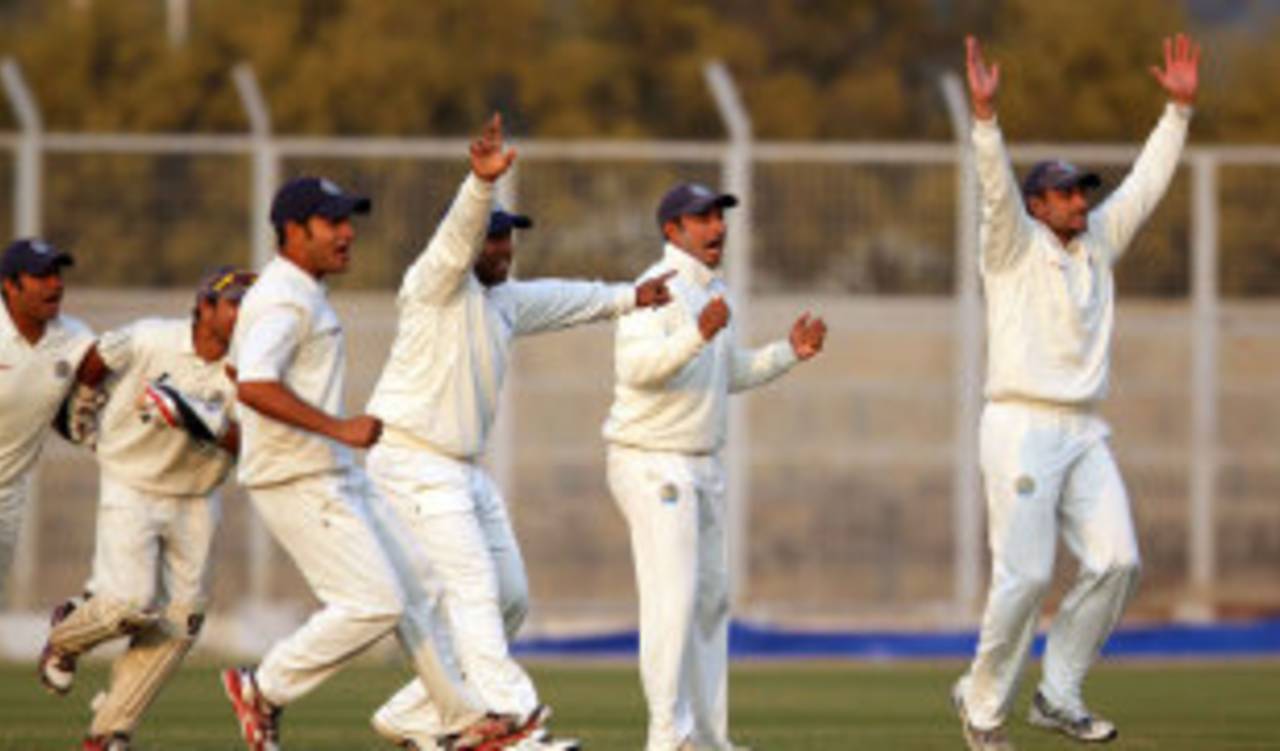The BCCI's technical committee has recommended that structural changes be made to the Ranji Trophy, India's premier first-class tournament, by doing away with the existing Elite and Plate divisions and rearranging the 27 teams into three groups of nine each.
The committee's other recommendations for domestic cricket include increasing the points for outright wins in the Ranji Trophy, allowing Ranji knockout games to go into a sixth day to produce a result, allowing bowlers two bouncers per over in one-day cricket and one bowler 12 overs.
The existing Ranji Trophy format, which replaced the zonal system in 2002-03, has teams divided into Elite and Plate League, and into two more sub-groups. Six teams from Elite and two from Plate make it to the quarter-finals. If the BCCI's working committee ratifies the recommendations, the tournament will have three groups. The BCCI is yet to finalise the exact criterion for division, but it is expected that group A will be the strongest and C the weakest. This will ensure every team gets eight matches at least; presently eight teams play seven league matches each, seven teams play six each and the remaining 12 get five each.
Three teams each from A and B, and two from C, will make it to the quarter-finals. The quarters and semi-finals, four-day matches at present, will be played over five days, and if a first-innings lead has not been achieved by then, they will go into a sixth day. If a first-innings lead has not been established by the sixth, the winner will be decided by a coin toss.
The committee also made recommendations to incentivise outright wins in league matches. If they are ratified, outright wins will be worth six points as opposed to five. The bonus point, which accrues on ten-wicket or innings victories, will remain.
Another important recommendation is for bowlers to be allowed two bouncers an over and for one bowler to have a 12-over quota in one-day matches. The field restrictions, though, won't follow the changes recommended by the ICC in international cricket.
India's domestic calendar was shuffled as well. The Irani Cup is likely to be played at the end of the season, and the Duleep Trophy at the start. There could be two Irani Cup matches this season as a result: Rajasthan (2011-12 champions) v Rest of India, and this season's champion v Rest of India. The Challenger Trophy has also been restructured. One of its three teams could be the winner of India's domestic one-day competition, the Vijay Hazare Trophy.
Sourav Ganguly, the head of BCCI's technical committee, said there would also be an emphasis on producing good quality pitches. Anil Kumble, who was a special invitee to the meeting, said these changes would provide better structure to the Ranji Trophy.
"Besides giving each team an equal number of matches home and away, this format brings in more competition as teams will have an equal chance of making it to the top two of their respective groups," Kumble told the BCCI's website. "We believe the home and away format gives that incentive for the state associations to organise four home matches in the centres they want. As the president of the Karnataka State Cricket Association it gives me the opportunity to take the game outside of Bangalore and develop it in the smaller centres."
